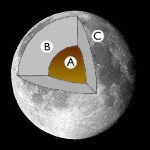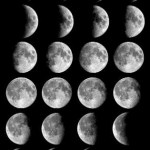moons
On Life Lines, Dr. Dolittle examines the fascinating parallels between hummingbird and insect flight. He and/or she writes: "The researchers placed nontoxic paint on the wing of a ruby-throated hummingbird at 9 different spots then videotaped the animal flying at 1,000 frames per second with 4 cameras simultaneously." Despite being far removed from insects on the phylogenetic tree, hummingbirds "stir up air around their wings in a way similar to insects like mosquitoes and dragonflies." This is an example of convergent evolution, as natural selection engineers similar solutions for very…
By Dr. Paul EstradaPlanetary physicist at the Carl Sagan Center for the Study of Life in the Universe, SETI Institute, and Gail Jacobs
If planets are a dime a dozen, moons are less than a penny each. There are at least 139 moons just within our own solar system. Most of these are the property of the gas giant planets beyond Mars. More than just a nice accompaniment to planets, moons may have habitats in which liquid water could ebb and flow - and possibly be a suitable home for life. Planetary physicist Dr. Paul Estrada investigates how moons around gas giants are formed -- an important…
Sure, astronomers might not call it a planet anymore, but every schoolchild knows how badass Pluto really is. It's got a giant moon, Charon, and two smaller ones, Hydra and Nix.
In addition to being colder than ice with an average temperature of 44 Kelvin (that's colder than liquid nitrogen), I'm here to bring you the news that despite the fact that it's so cold and so far from the Sun, Pluto has been melting!
Since its discovery by Clyde Tombaugh in 1930, astronomers have been fascinated with Pluto, making very careful observations of it, trying to learn more about this bizarre, icy sphere…
But I didn't want one! Stop your whining, Earthlings. We have a serious question to answer, courtesy of Tamara:
What’s the moon like below its surface, moving into the interior? And what’s the current thought on its formation?
Well, we do know a lot about the Moon's insides the same way we know about the Earth's; just like the Earth has earthquakes, the Moon has moonquakes. These tell us about the Moon's interior. From back when we landed on the Moon, we planted the Apollo seismic experiments and saw 28 moonquakes. From these, we learned that the Moon has a crust about 60 km deep, a deep…
And if the band you're in starts playing different tunes
I'll see you on the dark side of the Moon.
One of my favorite readers, Zrinka, asks us why we're only able to see one side of the Moon from Earth. Seriously, look at the different phases; we always see the same side of the Moon:
How does this happen? Well, the Moon makes one revolution around the Earth about every 29 days, and that's what causes the Moon phases. But the Moon also rotates once every 29 days also. Because of this, the same side of the Moon always faces the Earth:
We call this "being locked." We're not the only system…




